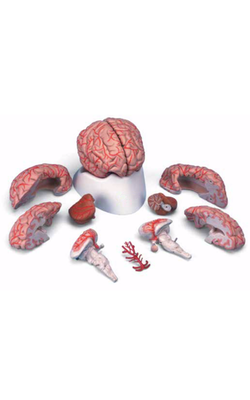Main Model

Myelencephalon : 37 Medulla oblongata

Medulla Oblongata
At the level of the foramen magnum, the spinal cord is continuous with the most caudal part of the brain, the medulla oblongata, commonly called the medulla. The medulla consists of (1) neurons that perform functions associated with the medulla and (2) ascending (generally sensory) and descending (generally motor) tracts that pass through the medulla on their way from or to the spinal cord. Some of the neuronal cell bodies of the medulla are organized into nuclei associated with specific cranial nerves. The medulla contains the nuclei for the glossopharyngeal (cranial nerve IX), vagus (X), and hypoglossal (XII) nerves as well as portions of the nuclei for the trigeminal (V), vestibulocochlear (VIII), and spinal accessory (XI) nerves. It also contains important relay centers and nuclei that are essential to the regulation of respiration, heart rate, and various visceral functions.
The medulla oblongata, or myelencephalon, is the most caudal segment of the brainstem. It extends from the level of the foramen magnum to the pons. The cavity of the medulla consists of a narrow, caudal part, which is the continuation of the central canal of the cervical spinal cord, and a flared, rostral portion, which is the medullary part of the fourth ventricle. The modest size of the medulla (0.5% of total brain weight) belies its importance. All the tracts passing to or from the spinal cord traverse the medulla, and 7 of the 12 cranial nerves (VI to XII) are associated with the medulla or the pons-medullary junction. Also, the medullary reticular formation contains cell groups that influence heart rate and respiration. The blood supply to the medulla arises from branches of the vertebral arteries.